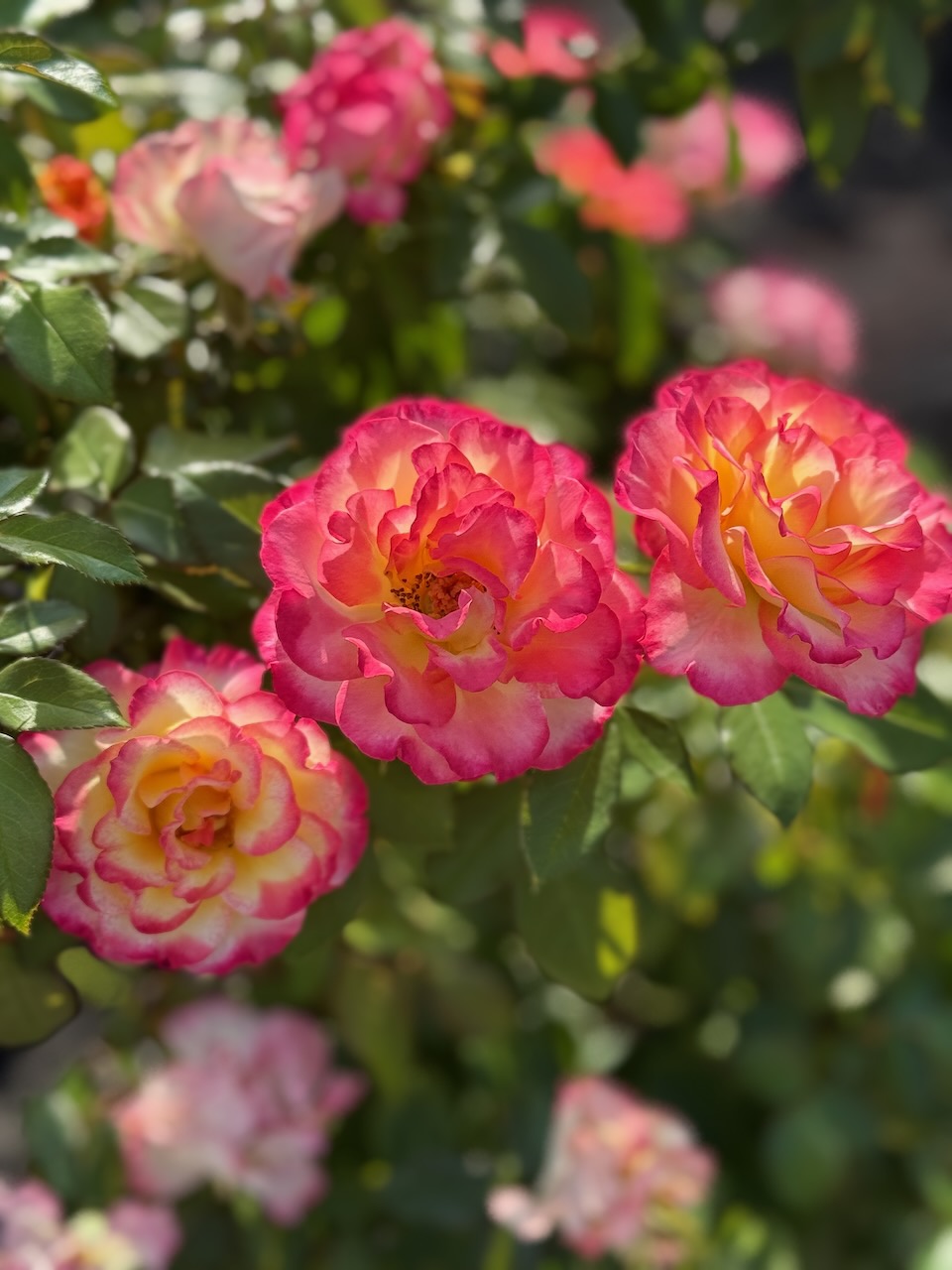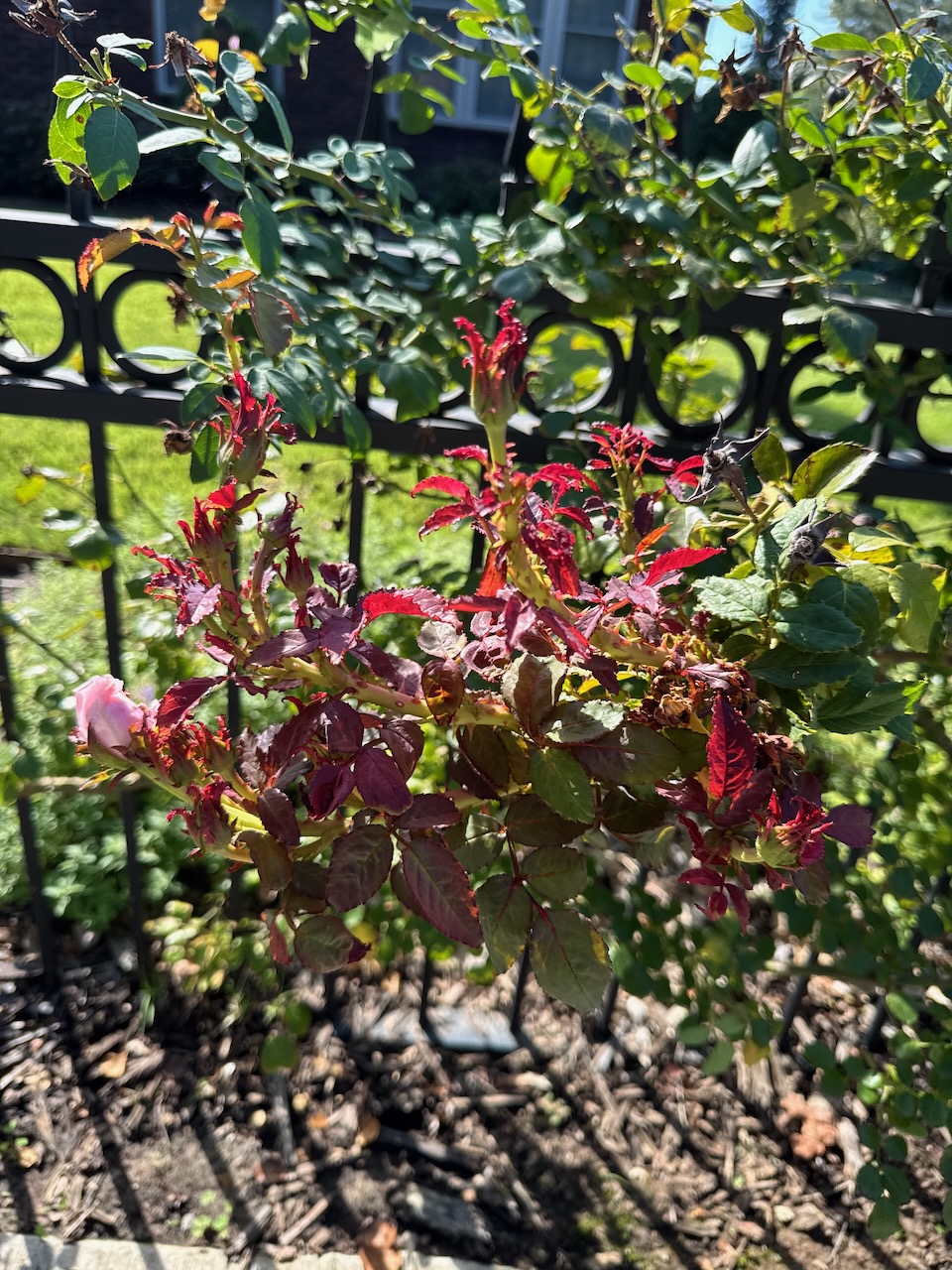Over the last few years, we've greatly improved the landscaping of our home in downtown Little Rock. This year, we decided to dilineate the beds from the yard to reduce difficulty trimming and handling weeds. Instead of using a metal or plastic border, we simply used a hose pipe to trace out a snaking border line for several beds, and dug a trench using a square transfer shovel. The trench is about four inches deep, and angled on one side, which allows for the mulch to fall into the trench and cuts the roots of the grass. We lined the beds with builder's paper or newspaper to stop the weeds, then shoveled on a few inches of mulch. In all we made around half a dozen trips to the nursury to buy black dyed cedar mulch, each time filling the bed of my '96 Toyota Tacoma with about a cubic yard of material.
The beds turned out beautifully, but the paper did not stop the bermuda grass from tunneling up to the surface. Next year, I'll use a sturdier biodegradeable barrier like cardboard. This season I'll try sethoxydim such as in Fertilome Over The Top II.

The pride of our front garden this fall was our collection of rose bushes on each side of the front sidewalk, which exploded with vibrant blooms of all colors as the weather cooled. We received many compliments from our neighbors on them, and each morning I would step out with my coffee and just stand around them, taking in the colors. But alas, all things come to an end.
A Death Sentence for Roses
In researching garden plants for my zone, I learned about Rose Rosette Disease. This is a virus which infects roses, causing shoots, mottled leaves, reddish discoloration, excessive thorniness, and a tell-tale "witches' broom" formation where many branches arise out of one point. It is spread from rose to rose by tiny eriophyid mites which ride on the wind or blown by leaf-blowers. Unfortunately, some of my roses were already affected by the virus. By the time symptoms appear, it's likely the entire plant is already infected with the virus, which travels through its vascular system even into the roots -- plants can be asymptomatic for up to six months after infection. There is no cure for the virus, once infected the only course of action is to dig up the entire plant, bag it, and dispose of it in the garbage where it won't infect another rose. Our local nursury Good Earth has a short article on RRD: Identification, Symptoms, and Treatment, including alternative plants.
My approach has been to prune infected canes to the ground, and spray all my roses every few days with a 2oz/gallon neem oil solution to control the mites, and vigilantly inspect new growth for symptoms. There is anecdotal evidence that aggresive pruning of infected canes may prevent the entire rose from becoming infected if done in time. We already dead-head regularly, but have begun disenfecting our clippers with bleach between bushes to prevent transfer of mites.
In a recent walk around the neighborhood, I realized the staggering rate of infection in our neighborhood. Out of seven rose bushes on my block, every one exhibits symptoms. Some have been exhibiting symptoms for some time, while others are just starting to show symptoms. Mites from these roses are likely what infected mine, it only takes an hour for a mite to transfer the virus, after being blown by the wind or leaf blowers.

I spoke with Derek Reed at the Pulaski County Master Gardeners Association, and he shared two fact sheets, which I'll provide here:
- UA Division of Agriculture: Rose Rosette Disease
- Oklahoma Cooperative Extension Service: Rose Rosette Disease
Derek shared with me:
Rose Rosette disease is very common in our area unfortunately. A large part of this issue is due to lack of awareness. [People's] rose bushes get it and then it is spread by mites. Part of the issue is an infected plant may not show symptoms. Once infected it is best to remove the entire plant. Unfortunately, since it is a virus it infects the entire system and is not localized. So while you [can remove] the symptoms by pruning the plant is still infected. Any mites that are living on that bush can transmit it to other plants still.
To help improve awareness, I've created a Symptomatic Rose Map, and will be sharing an information packet including the above fact sheets with rose growers in my neighborhood. I am not an expert, not all diagnoses will be accurate.